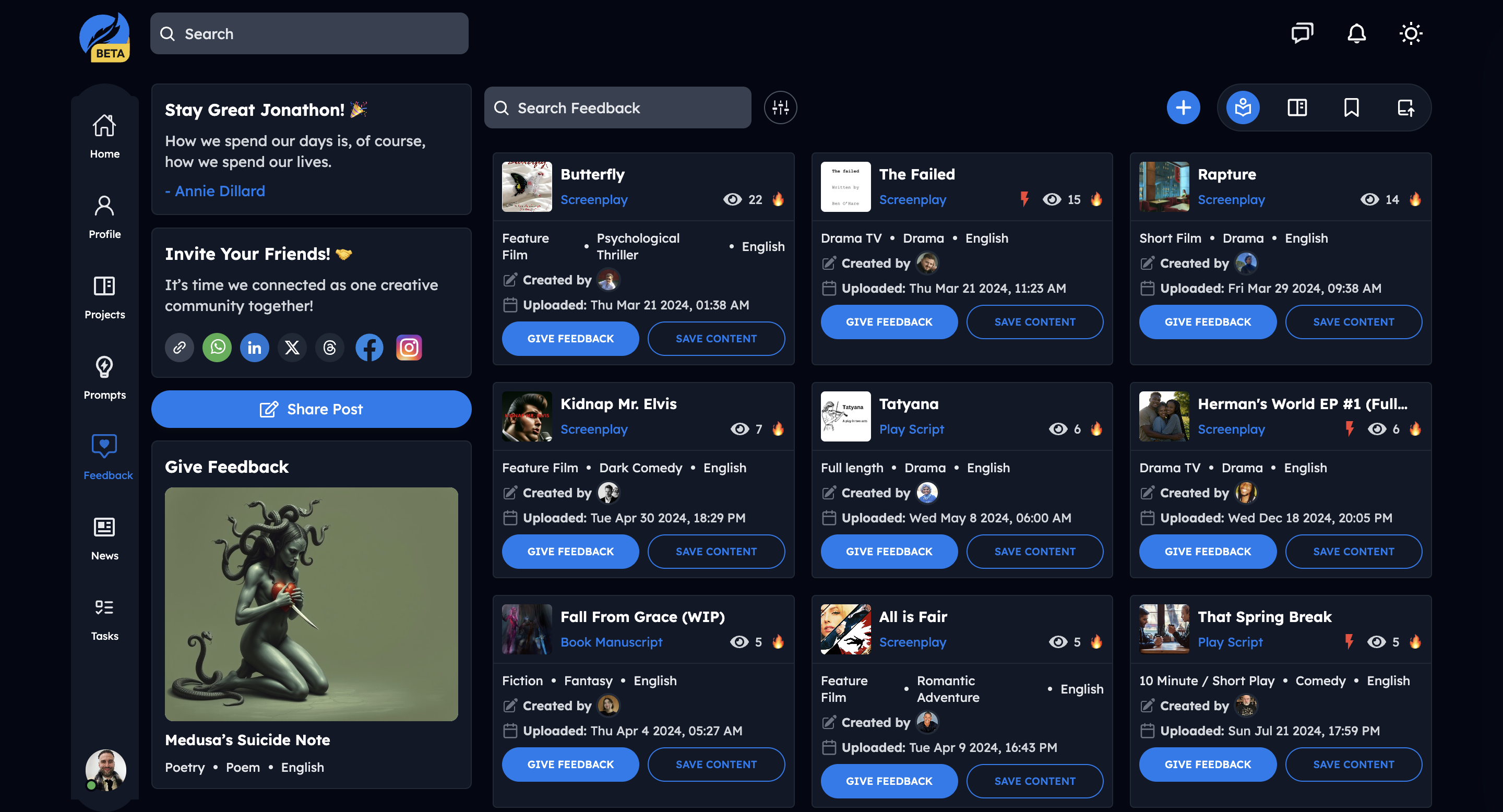11 Proven Ways to Succeed in Crowdfunding for Indie Games
by WriteSeen
Set for a crowdfunding campaign to fuel your indie game? You're among creators seeking to turn visions into gaming reality.
We'll explore 11 impactful strategies to ensure your campaign stands out in this dynamic space of crowdfunding for indie games. Count on these methods to enhance both your approach and your project's appeal, fueling not just funding but a thriving game development journey. Let's refine your path to success.
1. Set Clear Goals and Timelines
You're embarking on a crowdfunding journey for your indie game. It's crucial to start with crystal-clear goals and timelines. This isn't just about a monetary target—it's about clarity that attracts trust and investment. Setting precise funding goals gives potential backers insight into what you plan to achieve. It ensures they know where their money will go. Timelines are just as vital. Citywalkers like to commit, but they're wary of uncertainty. By laying out a realistic timetable, you're creating a solid trust foundation.
Key Steps to Setting Goals and Timelines:
- Break down budgets to reflect specific areas: development, marketing, rewards, etc.
- Establish both minimum and ideal targets for transparency. - Detail your timeline into phases—development, testing, and release.
- Highlight milestones to keep the community engaged and informed.
This proactive planning builds credibility. It showcases your dedication and capability to deliver. And trust us, it's a game-changer.
2. Choose the Right Platform
When gearing up for crowdfunding, selecting the right platform can significantly influence your campaign's success. Each platform caters to different needs and offers unique advantages. Think about your project's specific requirements and what your target supporters appreciate.
Top Factors in Platform Choice:
- Audience Type: Some platforms cater more to gaming communities, tapping directly into potential backer pools.
- Funding Model: Check if it uses an all-or-nothing model or allows flexible funding.
- Features Offered: Evaluate tools for promotion, community interaction, and analytics.
By aligning your game with the right platform, you enhance visibility and engagement. This choice isn't just strategic—it's intrinsic to setting your path straight from the start.
3. Build a Strong Narrative
Narrative is the backbone of your crowdfunding campaign. It's the emotional thread that ties potential backers to your project. Your story isn't just about your game; it's about its journey, characters, themes, and, most importantly, your passion.
Essential Components of a Captivating Narrative:
- Origin Story: Share why and how your game came to be.
- Engagement: Use relatable themes and characters that resonate with your audience.
- Impact: Detail what your game aims to achieve—culturally, socially, or technically.
- Authenticity: Keep it genuine. Your enthusiasm reflects in your storytelling.
Stand out by making backers feel they are part of the journey. Engaging narratives aren't just tales—they're experiences waiting for your audience to dive into. This is where your unique voice shines.
4. Create Engaging Visual Content
In the visual-centric online world, eye-catching imagery and videos aren't optional—they’re necessary. Your visual content acts as the first tangible glimpse of your game for potential backers.
Must-Have Visual Elements:
- Concept Art: Offers a sneak peek into the game's aesthetic and atmosphere.
- Trailers: Show off gameplay and narrative elements.
- Behind-the-Scenes Clips: Build more intimate connections with potential backers.
- Progress Updates: Regular fresh visuals to highlight development stages.
Visuals help convey professionalism and inject energy that mere words can't capture. They are silent communicators of quality and vision.
5. Offer Attractive Rewards
Rewards are an impactful way of expressing gratitude to your backers while incentivizing pledges. They turn your supporters into community members, eagerly participating in your project's journey. Offering attractive, thoughtful rewards ensures you maintain enthusiasm and build lasting relationships.
Ideas for Reward Tiers:
- Limited Edition Items: Rare gear, signed art, or unique collectibles.
- Game Access: Early or exclusive access to specific game levels or content.
- Personalization: Influence in the game, such as naming characters or designing minor elements.
- Experiences: Behind-the-scenes tours or development diaries.
Crafting creative reward tiers entices potential backers. They provide a sense of belonging and value beyond the digital realm.
6. Engage Your Community Early
It’s never too soon to start engaging your community. Early interactions cultivate excitement and anticipation, transforming them from passive observers to active supporters. By rallying your community before launching your campaign, you effectively nurture advocates for your game right from the start.
Effective Engagement Strategies:
- Social Media Teasers: Regular updates to generate buzz.
- Feedback Solicitation: Make your community feel involved by incorporating their input.
- Interactive Content: Polls or Q&As that deepen engagement.
- Regular Communication: Updates on progress, even on challenges—transparency fosters trust.
An engaged community serves as your first-line advocates. They fuel your campaign and act as the foundation for future growth. It's about creating a loyal base that believes in your vision just as much as you do.
7. Leverage Media and Influencers
When it comes to expanding your reach, media and influencers can be your best allies. The right partnerships can elevate your campaign, amplifying its visibility across various channels. It's about getting your game in front of the right eyes.
Steps to Leverage Media and Influencers:
- Targeted Outreach: Identify and connect with influencers in the gaming space who resonate with your game's theme or genre.
- Press Releases: Distribute well-crafted press releases to gaming and tech publications.
- Mutual Benefits: Offer influencers exclusive access or insights in exchange for promotion.
- Authenticity Focus: Collaborate with those whose audience truly aligns with your vision.
By joining forces with influencers and media, you extend your campaign's reach beyond your immediate network, tapping into diverse audiences eager to discover new indie game projects.

8. Offer Transparent Budgeting
Transparency is paramount in crowdfunding. Backers want to know their investments are well-placed. A clear, detailed budget not only reassures them but also showcases your professionalism and planning prowess.
Key Aspects of Transparent Budgeting:
- Breakdown Costs: Clearly outline expenses, from development to marketing.
- Milestone Financing: Show how funds will be utilized at each stage.
- Consistent Updates: Provide regular budget updates post-funding.
- Accessibility: Use simple language and visuals like pie charts for clarity.
Financial transparency fosters trust and encourages more generous support. When backers see a well-thought-out budget, they're more likely to invest with confidence.
9. Prepare for the Long Game
Success isn't just about launching—it's about maintaining momentum. Prepare for post-campaign realities by planning how you'll keep backers engaged and informed about future developments.
Strategies for Long-term Engagement:
- Communication Plan: Regular updates about progress and milestones.
- Community Involvement: Continued engagement through forums or social media.
- Feedback Loops: Regularly gather and incorporate backer feedback to refine the game.
- Backup Plans: Be ready with alternatives if challenges arise.
This prolonged engagement converts early supporters into long-term fans. It's about nurturing the community and ensuring they remain invested in your game's journey.
10. Implement Feedback Effectively
Feedback isn't just noise—it's a tool for improvement. Backers often provide invaluable insights that can enhance both your campaign and the game itself. Listen actively and adapt accordingly.
Best Practices for Implementing Feedback:
- Structured Channels: Set up dedicated forums or emails for receiving feedback.
- Prioritize Feedback: Determine which suggestions align with your vision and capacity.
- Acknowledge Contributions: Publicly recognize valuable input.
- Iterate and Improve: Use feedback to tweak the game or campaign for better results.
Feedback implementation shows backers that their voices matter. It's about creating a participative environment where everyone feels part of the project's success.

11. Celebrate Milestones Publicly
Celebration serves as recognition and motivation. Sharing milestones not only acknowledges backers' support but also keeps excitement and momentum alive.
Milestone Celebration Ideas:
- Social Announcements: Share achievements with posts and graphics.
- Exclusive Updates: Offer detailed insights to backers celebrating these milestones.
- Interactive Celebrations: Host Q&As or live streams to mark major achievements.
- Community Involvement: Invite backers to participate in milestone-related events.
Publicly celebrating milestones isn’t just about marking progress—it’s about acknowledging the community's role in reaching each step. It fuels continued interest and backing.
Conclusion
Crowdfunding for indie games is more than raising money—it's about building trust, community, and creative momentum. When you approach your campaign with clarity, compelling storytelling, and authentic engagement, you lay the foundation for long-term success beyond just meeting your goal.
From setting clear targets and showcasing visuals to involving influencers and celebrating milestones, each tactic brings your project closer to the people who believe in it. Backers want to be part of something meaningful—invite them in with transparency, passion, and consistency.
Looking to collaborate, gather feedback, or get your indie game noticed? Join WriteSeen—a secure creative platform where developers, writers, and artists connect, share ideas, and launch projects with impact.
TAGS